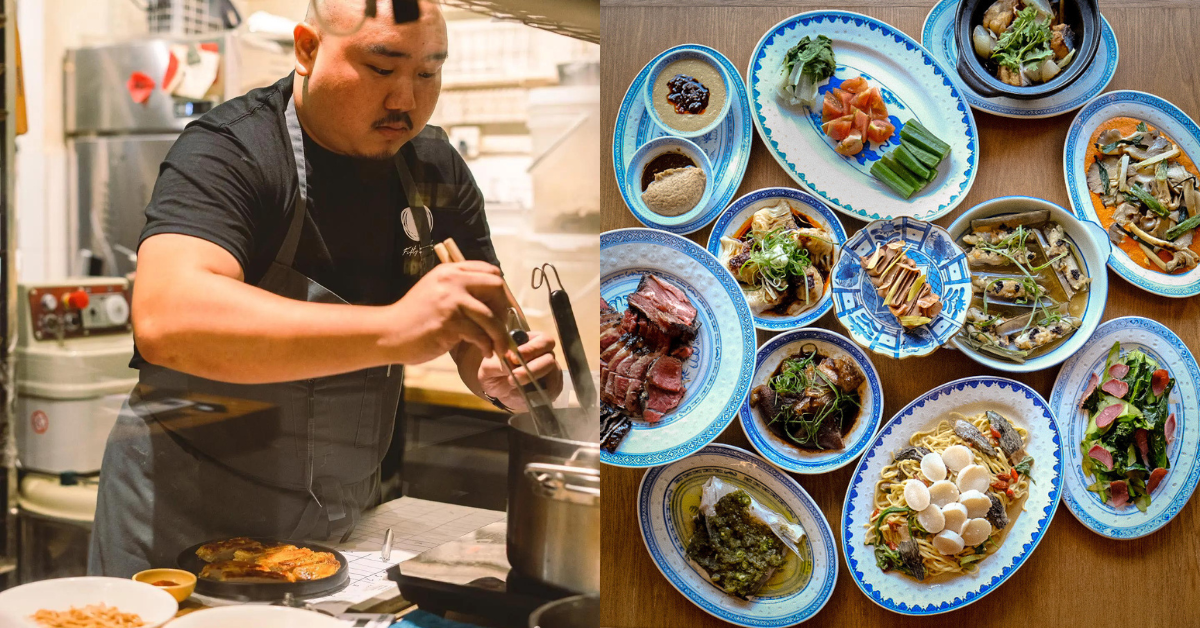It’s apparent that Malaysia has been falling behind in phasing out petroleum vehicles for greener electric options. One reason points to the nation’s unclear goals for implementation through the National Automotive Policy (NAP) 2020.
The plan lacked specifics on incentives for industry players and was bundled with other types of energy-efficient vehicles (EEVs).
Previously, there were reports that a refined NAP for the electric vehicle (EV) industry would have been ready in July 2021. It was expected to include initiatives by the government to accelerate the adoption of EVs in Malaysia through financial incentives, tax levies, and more.
But that didn’t happen.
Despite the delay, there are already some players in the EV sector who are ready for the day that Malaysia sees wider adoption.
Public charging stations
Hesitancy in using EVs can often be blamed on the lack of infrastructure. To encourage penetration, a proposal by the Malaysian Green Technology And Climate Change Centre (MGTC, otherwise known as GreenTech Malaysia) targets having 7,000 alternating current (AC) public charging points and 500 direct current (DC) charging points nationwide.
DC charging points are faster (about 1 hour to fully charge a car) than AC charging points (about 8 hours for a full charge). Malaysia already has a few public charging stations available, albeit mostly in major cities.
chargEV by GreenTech Malaysia (MGTC)
MGTC, an agency under the Ministry of Environment and Water, has built its own charging network, chargEV. The charging points are compatible with most plug-in hybrid electric (PHEV) or battery electric (BEV) cars.
chargEV has a charging capacity between 3.7kW to 22kW across the network. Unfortunately, DC charging points are not yet part of chargEV’s network.
Where to find them: With 310 charging stations in Johor KL, Kedah, Melaka, Penang, Perak, Sarawak, and Negeri Sembilan, chargEV can be found in shopping malls, hotels, Petronas stations on highways, office parks, and KLIA airports. You can find the full list of its charging stations here.
The benefit: chargEV has an annual membership card which costs RM240, and cardholders can use chargEV’s facilities for free. While it may sound like a hefty upfront cost for a membership, you’d technically only be paying RM20 per month for unlimited charging.

Worth noting: BMW has its own ChargeNow network in Bangsar Shopping Centre in KL, Ramada Plaza by Wyndham in Melaka, Iconic Hotel in Penang, along with Weil Hotel and Banjaran Hotsprings in Ipoh.
The German brand holds a partnership with GreenTech where members of ChargeNow can also use chargEV’s network around Malaysia.
Reserve + Shell Recharge
Reserve + Shell Recharge bays came about as a partnership between ParkEasy, Shell Malaysia, BMW, and Sunway Group. ParkEasy is an app allowing users to reserve parking bays, and it built the Shell Recharge charging bays installed with BMW iWallbox Plus chargers in Sunway Pyramid with the help of Shell Malaysia.
These chargers use a Type-2 plug which is suitable for most PHEVs/EVs on Malaysian roads, and depending on which location you go to, they have a charging capacity between 3.7kW to 22kW. To encourage good charging etiquette and deter hogging, an hourly fee is charged based on the duration you’re parked, just like the rates you’d pay in ticketed parking facilities.

Where to find them: There are 18 of these charging stations across IOI City Mall, Lot 10, Sunway Pyramid, Sunway Velocity, and 163 Retail Park, to name a few.
The benefit: ParkEasy allows EV owners to book a charging station an hour before their arrival. Through its app, users can choose which mall they’re headed to, reserve a parking bay, and unlock a station to charge their EV. The cost of using its charging points varies with locations, and fees for each site will be displayed when you click on the in-app pricing bar prior to confirming a reservation.
As a ParkEasy user, you can also use the app to reserve spots at 11 EV charging bays in other locations where the startup has partnered with Porsche, Pestech, and chargEV.
Worth noting: Through a partnership with Porsche, 6 Shell stations will be equipped with DC chargers (180kW) around Malaysia. Each charging station will have 2 cables so 2 cars can charge simultaneously. The offering is expected to roll out in stages with 4 to be ready in the second half of 2021 and 2 additional stations by the first half of 2022.
Editor’s Update 06/08/21: Paragraphs in the above section have been edited to reflect greater factual accuracy based on clarifications from ParkEasy.
EV Connection (EVC)
Founded in 2016, EV Connection (EVC) works with shopping malls and property developers like EcoWorld, Skyworld, and GuocoLand so residential buildings can accommodate EV owners. EVC also provides charging equipment for users to install a charging port in their own residential homes.
As DC charging stations are scarce in Malaysia, EVC is working to fill the gap. As of April 2021, it was reported that EVC has deployed its network of DC charging stations along the North-South Expressway (NSE).

Where to find them: EVC’s DC charging stations can be found at Caltex petrol stations at the Ayer Keroh rest and service areas (RSA), the Bukit Gantang RSA, and the Caltex Skudai R&R.
The benefit: For user convenience, EVC developed its own app, JomCharge. It lets EV owners locate available chargers nearby, start and stop the charging process remotely, and pay via the app.
EVC’s fast-charging station should juice up an EV to 80% within 30 minutes, costing RM1.20 per minute, but a member of the Malaysian Electric Vehicle Owners Club (MyEVOC) noted that this may be most useful only for pure EVs or BEVs.
Positioning DC charging stations on the NSE can reduce range anxiety for EV drivers travelling between major cities like Johor Bahru, Melaka, KL, and Penang. Though waiting 30 minutes to charge seems like a long time when compared to fueling up petrol, during long journeys, it could be a necessary break.
Did you know: Range anxiety is the electric vehicle owner’s fear that an EV’s battery does not have sufficient enough charge for the vehicle to reach its final destination or that a charge point won’t be available for charging “on the road.”
driivz

To add, charging an EV at public stations isn’t the only way to fuel up a vehicle like with petrol cars. Portable chargers from agents can also be installed to charge an EV overnight at home, much like charging your phone while you’re asleep. They’re also useful on the go, as long as there is access to a 3-pin socket along the journey.
You can find a list of Malaysian agents/installers for different portable chargers here.
EV distributors
There are only a few EV models you can buy within Malaysia itself, according to WapCar.my. Though the same source later mentioned in a report that the MINI Cooper SE 3-Door was also on sale, we were unable to find dealers which had it available.
Thus, we’ve only listed the 2 names that can be purchased in Malaysia as of August 2021.
Nissan showrooms
Currently in its second generation, the 2019 Nissan Leaf is a 100% electric car that comes with a starting price of RM181,263. It is said to be the cheapest EV in the Malaysian market so far.
Where to find them: A Nissan Leaf can be purchased from ETCM (Edaran Tan Chong Motor) showrooms around the country. The full list of Nissan car dealers can be found here.

The benefit: Nissan is offering a subscription programme that allows EV novices to loan a Nissan Leaf for 2 years. For RM2,500 a month, the subscription includes a 20,000km/year mileage cap, complimentary maintenance services, and a wall box charger, amongst other things.
The subscription is beneficial for those who are considering owning an EV but are unable to commit due to high instalment plans or the initial down payment. Beyond test driving an EV, you can get proper hands-on experience of an EV lifestyle without full commitment.
Porsche Centres

The Porsche Taycan is targeting an upper luxury market with a price tag between RM584,561 for its basic Taycan to RM1,195,000 for its most premium model, Taycan Turbo S.
Where to find them: Purchasing a Taycan model can be made from Porsche Centres located in Ara Damansara, Sungai Besi, Penang, and Johor.
The benefit: The Taycan is meant for those attracted to the aesthetics, build, driving experience, and prestige that comes with owning a Porsche, without sacrificing speed and power, a stigma often associated with an electric car.
Other sources have also described the Taycan as a direct competitor to Tesla’s Model S, albeit with a shorter driving range. As Tesla cars are not easily available in the local market as of now, the Porsche Taycan could be a close alternative.
EV financing
One of the biggest hurdles to owning an EV is the lack of financial incentives provided by the government. As we await news on a detailed EV policy under the NAP promising economic benefits, the private sector is already preparing financing programmes for consumers.
CIMB Bank
CIMB is offering a CIMB Auto Financing Hybrid Financing for those purchasing a hybrid or electric car.
Where to find them: TBA.
The benefit: CIMB claims to provide a fixed rate interest starting at 2.34% per annum, which is 0.5% lower than conventional interest rates which are at least 2.85%.
While CIMB’s initiative lacks available details we could gather, The Edge reported that customers purchasing new hybrid vehicles will be offered minimum financing of RM70,000 and tenure up to 9 years.
Given that the cost of a Nissan Leaf is RM181,263, in the case where one is able to attain CIMB’s minimum RM70,000 financing, it would only contribute as a rough 38% loan for the car. However, the total loan amount banks provide highly depends on an individual’s income and credit score, so financial aid could go up much higher.
These are, of course, just basic calculations that overlook many more costs like road tax, insurance, and the like. Taking everything into account though, owning an EV appears to be a lifestyle still catered to the T20 group, or at least the higher class-M40 groups.
-//-
Malaysia still has a lot of catching up to do. Players in private sectors have already made their move, but it will be futile if the government itself does not come up with proper policies and a realistic, detailed roadmap for adoption.
Battling the COVID-19 pandemic takes precedence over pushing EV adoption, but that’s no excuse to not at least lay out a proper plan for growth the way our neighbours have done.
For example, Singapore’s Deputy Prime Minister Heng Swee Keat announced this year (2021) that the government will set aside S$30 million over the next 5 years for EV-related initiatives.
Can Malaysia do the same? Only time will tell.
- You can read more articles we’ve written about EVs here.
Featured Image Credit: ParkEasy and EV Connection









